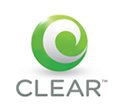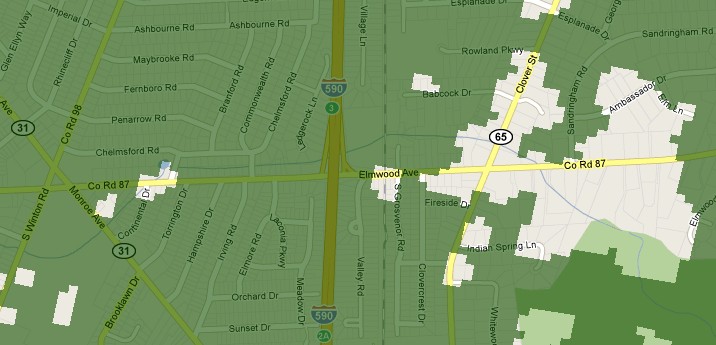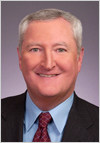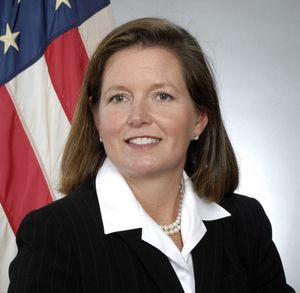[Updated] Clearwire Launches 4G Service in Rochester & Syracuse, Road Runner Mobile Also Forthcoming
 [The article was updated at 10:30am to include promotional and coverage information not available when the article was published late last night]
[The article was updated at 10:30am to include promotional and coverage information not available when the article was published late last night]
Clearwire today announced the launch of its 4G mobile broadband service for businesses and consumers in Rochester and Syracuse, New York. Designed to deliver the Internet at speeds four times faster than 3G, CLEAR is priced comparably to many wireless broadband plans, but has no usage caps.
Pricing from their website offers customers stay-at-home and mobile service plans (or both). Customers choosing month-to-month service have to buy the equipment up front, starting at $70 and pay a $35 activation fee. Those who commit to a two-year service contract can lease the equipment for $4-6 a month and skip start-up fees. Packages start at $40 a month for 6/1Mbps service. At $55 a month, they take the speed limit off, providing occasional bursts of wireless speed up to 10Mbps. Another $15 on top of that buys you nationwide 3G roaming. Sales tax is not included. Customers get a 14 day trial period to evaluate the service and can cancel within that window with no obligation, although our Jay Ovittore reports they’ll drag you through the cancellation process.
At $40 for unlimited use, CLEAR’s 4G service beats Cricket, which charges the same price for 3G speeds, but limits consumption to 5GB per month before they start throttling your speed to dial-up. Other mobile broadband services typically charge up to $60 for 5GB of usage at 3G speeds. Ironically, while 4G service from Clearwire is unlimited, the slower 3G speed service is not — there is a usage limit of 5GB per month on the 3G network, and then overlimit fees of five cents per megabyte kick in.
A statement from the company released early this morning talks up the fact CLEAR does not burden their 4G customers with Internet Overcharging schemes like other wireless broadband providers.
“Our residents now have a fast Internet connection that’s as mobile as they are,” said Jerry Brown, regional general manager for CLEAR. “And we’re thrilled to offer affordable rate plans with no limits on the amount of data customers use. No caps on usage, no penalties – our customers just use the Web as much as they want wherever they go – it’s that simple.”
In Rochester, CLEAR covers approximately 560 square miles and more than 600,000 people with service extending as far north as Lake Ontario, as far south as Canandaigua and Geneva (Ontario County), as far west as Spencerport, and as far east as Webster.
In Syracuse, CLEAR covers nearly 230 square miles and more than 265,000 people with service extending as far north as Brewerton, as far south as Nedrow, Auburn, and Cortland; as far west as Village Green, and as far east as Fayetteville and Manlius.
However, the company’s 4G coverage area is spotty in many areas in both cities. Verifying coverage from their website is essential before considering CLEAR. Anecdotal reports from some of our readers and others suggest 4G service from Clearwire is not nearly as robust as 3G service from some other providers, and dead zones and slow speeds have caused some to cancel service. Here’s an example of their coverage in my part of the town of Brighton, just southeast of Rochester:
Some minor gaps in coverage are apparent near Commonwealth Drive, and if you were getting gas at the 12 Corners Mobil station or visiting Citizens Bank behind it, you’d be out of luck, but otherwise coverage looks fairly good to the west of Interstate 590. However, a very strange gap pops up between Valley Road and South Grosvenor Road, also impacting a few apartment buildings at Elmwood Court Apartments, 3100 Elmwood Avenue. That’s odd because although that part of Elmwood slopes slightly downwards, it’s still much higher than the homes on Valley Road or the apartments further back in the complex. A major service gap opens up on Elmwood at Clovercrest Drive and extends into the very tony neighborhoods around Ambassador Drive and Clover Street. But the country club set will do fine browsing away on the golf course at the Rochester Country Club further east.
In short, service can vary dramatically street by street, block by block, from nothing at all to full speed ahead. Be sure to check your area before you commit to keeping the service, much less sign a two year contract for it.
For the rest of Rochester, if you live in the city or an inner-ring suburb, coverage is generally available. Those further out in towns like Henrietta, North Chili, southern Pittsford, Honeoye Falls, Avon, Scottsville, Churchville, Brockport, Penfield and Perinton face significant gaps or no coverage at all. Things improve dramatically in Ontario County in towns like Farmington and Victor and the cities of Canandaigua and Geneva.
For the greater Syracuse area, coverage pops up in Auburn and then disappears eastward until reaching Camillus. Generally, coverage in Syracuse is not nearly as dense as in Rochester, with large gaps opening between suburbs and the city itself. Mattydale is solidly covered, for instance, while Minoa isn’t.
Now that CLEAR has launched 4G service in Rochester and Syracuse, Road Runner Mobile, which is simply CLEAR rebranded as a Time Warner Cable service (they partly own Clearwire) will also soon be on the way. Pricing in other Time Warner Cable cities wasn’t much different than from Clearwire direct, and some cable plans really push service contracts, which you really do not want on a service this new. Do not commit to one unless you are satisfied with the service where you plan on using it.
Clearwire’s 4G Network in 2010
CLEAR 4G service is currently available in 44 markets across the United States, including: Syracuse and Rochester, N.Y.; Atlanta and Milledgeville, Ga.; Baltimore, Md.; Boise, Idaho; Chicago, Ill.; Las Vegas, Nev.; St. Louis and Kansas City, Mo.; Philadelphia, Harrisburg, Reading, Lancaster and York, Pa.; Charlotte, Raleigh, and Greensboro, NC; Honolulu and Maui, Hawaii; Seattle, Tri-Cities, Yakima and Bellingham, Wash.; Salem, Portland and Eugene, Ore.; Merced and Visalia; Calif.; Dallas/Ft. Worth, Houston, San Antonio, Austin, Abilene, Amarillo, Corpus Christi, Killeen/Temple, Lubbock, Midland/Odessa, Waco and Wichita Falls, Texas; central Washington, D.C.; Richmond, Va.; and Salt Lake City, Utah.
In the summer of 2010, CLEAR 4G will launch in Tampa, Orlando and Daytona, Fla.; Nashville, Tenn.; Modesto and Stockton, Calif.; Wilmington, Del.; and Grand Rapids, Mich. By the end of 2010, CLEAR 4G will also be available in major metropolitan areas such as New York City, Los Angeles, the San Francisco Bay Area, Boston, Denver, Minneapolis, Miami, Cincinnati, Cleveland and Pittsburgh.
You can read a company-provided tutorial about the service below the jump.


 Subscribe
Subscribe





